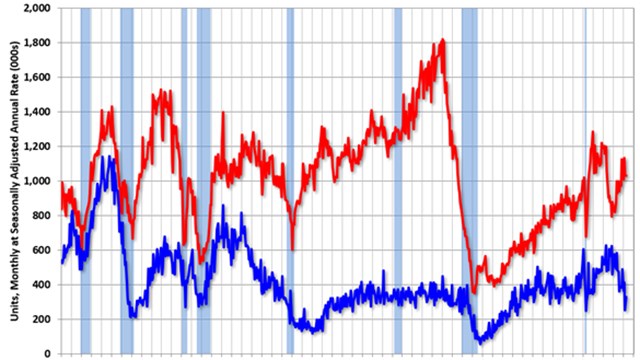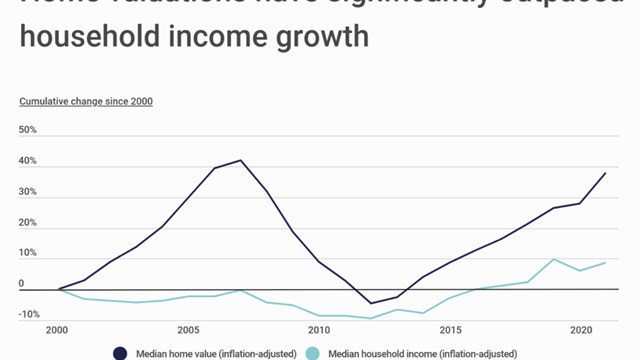The real estate mantra is location, location, location, right? After that, it's price, square footage, condition, state of the market and maybe rooms with a view or available financing terms.
This is all true—but there's a relatively new game in town as well, and it is making more of a difference in home sales than you might expect. "Home staging" is the term used to describe the process that some homeowners go through in order to prepare their property for sale. Staging has gained traction as sellers try to get their asking prices, or more, and is changing the way people think about selling their homes.
Staging Origins
The term "home staging" was coined by realtor Barb Schwartz in 1972. Schwartz was seeking a way to separate her real estate listings from others on the market, so that they would sell faster and command higher prices, and the traditional approach of placing a bouquet of fresh flowers in the kitchen or the entrance foyer was not producing the desired effect. What was needed was a change in perspective.
According to Schwartz, it was using a theater metaphor on a particularly resistant seller that struck the spark of an idea. Schwartz phrased her instructions to the seller in terms of producer, lead actress (the seller), director (Schwartz), and a sell-out crowd (the potential buyers). In order to sell a property for the best prices in the shortest amount of time, it was necessary to put on the best face possible for potential buyers—to "stage" the apartment or home.
The idea behind home staging may be somewhat older, dating back to the 1950's, when old-fashioned Hollywood glamour still captivated the attention of the American public, but Schwartz is largely responsible for codifying the home staging industry and giving it a label. She is president and CEO of StagedHomes.com, and is a teacher and speaker, in addition to the 30 years' experience she holds in the field of home staging. Her training program awards the designation Accredited Staging Professional (ASP).
Other professionals have entered the field and added their personal expertise to the market over the years. For example, Christine Rae, president of Certified Staging Professionals™, has also developed a training program for home stagers, graduates of which earn the Certified Staging Professional (CSP) designation.
The Philosophy
According to Rae, one particular incident encapsulates the philosophy—and rationale—behind home staging. A recent student of hers reported that her mother bought a house because there was a beautiful dress and a pair of shoes on the bed, and the woman's mother thought, "I want this life."
"It isn't about decorating, it's about marketing," says Rae. "There are some decorating principles that apply, but the industry is emerging from the real estate industry, not the decorating industry."
Home staging is based primarily on perspective: the buyer's perspective. The idea is not to sell as much furniture as possible, but to put the home in the best possible light for the most likely buyer. "After all," says Schwarz, " a house is worth only what a buyer will pay for it."
The prior thinking held that a lived-in home that seemed comfortable and inviting to the seller would also be that for the buyer. Not true, say the staging professionals. Buyers are not really interested in all those family photographs, for example—and there's no telling whether the cozy, comfortable-if-a-little-bit-worn club chairs in your den won't make a prospective buyer think of his or her grandparents' home—the one he or she absolutely hated to visit as a kid. That's where a home stager comes in, helping to clear clutter, re-arrange rooms, and present the condo, apartment, or home in the best, most broadly appealing light possible.
Although home stagers do occasionally recommend major changes, Schwartz advocates using materials that are found readily around the seller's home to provide a template for the buyer's future life there. Sheets over card tables, spare linens as window dressings, and early packing of the seller's personal effects are among the tips found in the book Schwartz co-wrote with Mary Seehafer Sears, Home Staging: The Winning Way to Sell Your House for More Money (2006, John Wiley & Sons, Inc).
"It's not just about cleaning the house and putting away personal belongings," says Rae, "it's about making sure that the rooms are styled to their peak appeal, the way the rooms flow, the furniture position. Why risk it? This is an investment with a return."
This difference in perspective is one of the key reasons that a staging professional can provide an important role in the process.
Staging is not only concerned with the interiors, either. Home staging includes a review of the property's landscaping as well. After all, if the buyer is immediately put off by brown shrubs and patchy grass, they may never make it to the front door. "Seventy-eight percent of the decision to see a property is based on location and size, and the other 22 percent is based on curb appeal," says Rae.
The Benefits
"Staging works," says Conni D'Emidio, of Take Center Stage in Bayside, New York, adding that staged homes sell faster and for more money than homes that are not staged. Homes that would normally sell quickly anyway can benefit from staging as well—D'Emidio says they bring higher prices, sometimes more than the asking price.
"It always has an impact, because really, everybody buys with their heart first," D'Emidio continues. "They'll tell you whatever they want, but unless there is something that they like about the space, besides the light and the square footage, they won't be sold on the home, and everything else is really secondary. It's the heart that buys a home, and we really play to that. So it's never a disadvantage—there is always a reason to stage."
"No one will buy a home until they can mentally move in," says Schwartz.
"From the minute someone walks through he door, 72 percent of that first impression is within the seller's control," adds Rae, "and we can affect that through the way we stage. If you stand in a foyer, for instance, you can see up to five different areas of the house, and all of those, in a blink of an eye are impacted by that first impression. What it looks like, how it feels, what it sounds like, what is smells like—and all of those things are affected by staging."
Another benefit of the impartial perspective that a home staging professional can offer is addressing a major difference between many of today's buyers and sellers: the generation gap. "First time buyers are usually early 30's," says Rae. "Most of the sellers today are baby boomers. You have a disconnect in how they live their lives, how they spend their money and how they use their time. Young urban professionals are busy-busy-busy, even if they have a family. They don't want to move into a house and have to rip up the carpet the next week. They want to move in and be happy the next day."
The professionals point out another perspective—which might never occur to sellers—which concerns the payment terms for the improvements. When the seller spends the dollars to improve the flooring, for example, the cost is very quickly recovered (often at a high percentage yield) when the house is sold, usually much faster than without the improvements. The cost of the improvements is then absorbed into the buyer's mortgage, which is admittedly higher, but if the buyer has to take out a mortgage and then make improvements, he or she must have the cold, hard cash, and be willing to sink it into the home.
The Process
Typically, home staging is a three-step process. First is the consultation. The home stager comes to the property and evaluates the current conditions and the potential changes. The recommendation list is then given to the owner. At this point, do-it-yourselfers can take over and handle the recommendations, if they are capable and wish to save on staging fees. If they prefer to leave it to the professionals, step two is the execution of the recommendations. Step three is the return of the home stager to style each and every room, so that it appeals to the most likely buyers.
D'Emidio articulates her personal version of the process: "I get called in for a consultation, then I give them a report with estimates of how much it would cost to do all of it. Often it includes painting, cleaning jobs, and fixing floors or carpets. Usually the owner does some of that, and then we come back to rearrange the furniture and the windows. Windows are very important. We also bring in mirrors, artwork, and lighting, which is also very important. Lastly, we give the owner a list of what to do when showing the house."
The Costs
The cost of home staging includes the consulting fee and the various alterations that need to be made, says Rae. "It depends on what shape the house is in. For a full staging service it could range from $500 to $5,000, for a larger home. A mansion costs more than a studio."
"Generally a consultation is based on the square footage of a property," continues Rae. "In an urban setting, the fees will be more. The range is generally $250 to $500 for a consultation, which is like a very basic road map."
Full service can have its advantages, according to D'Emidio. "I charge a consultation fee and then if they ask me back to make the changes, I take the consultation fee off."
Investing in a home stager and the adjustments they recommend can be a pretty safe investment. For modest investments in home staging, from about $212-$2,841, or between one and three percent of the list price, the average return was a whopping 169 percent, according to a 2003 survey conducted by Homegain.com.
The Choice
Home staging, still a relatively new service, is a self-regulated industry. Leaders are emerging in the field of training, but there is no licensing criteria or national administrative board as of yet. When choosing a home staging professional, sellers should look for credentials and training. Consult a real estate agent for referrals, or look on the Internet for data bank listings. For example, StagedHomes.com and stagingtraining.com both list qualified home stagers all over the country, in Canada, and abroad.
In the end, selling your condo apartment or family home is about getting the best price you can in the shortest amount of time. While the old real estate mantras of location, location, location and all the rest still hold very true, you may be able to boost your bottom line by taking a more creative approach to the process and looking at it more in terms of theater than simply strictly business.
Denton Tarver is a freelance writer living in New York City.







Leave a Comment